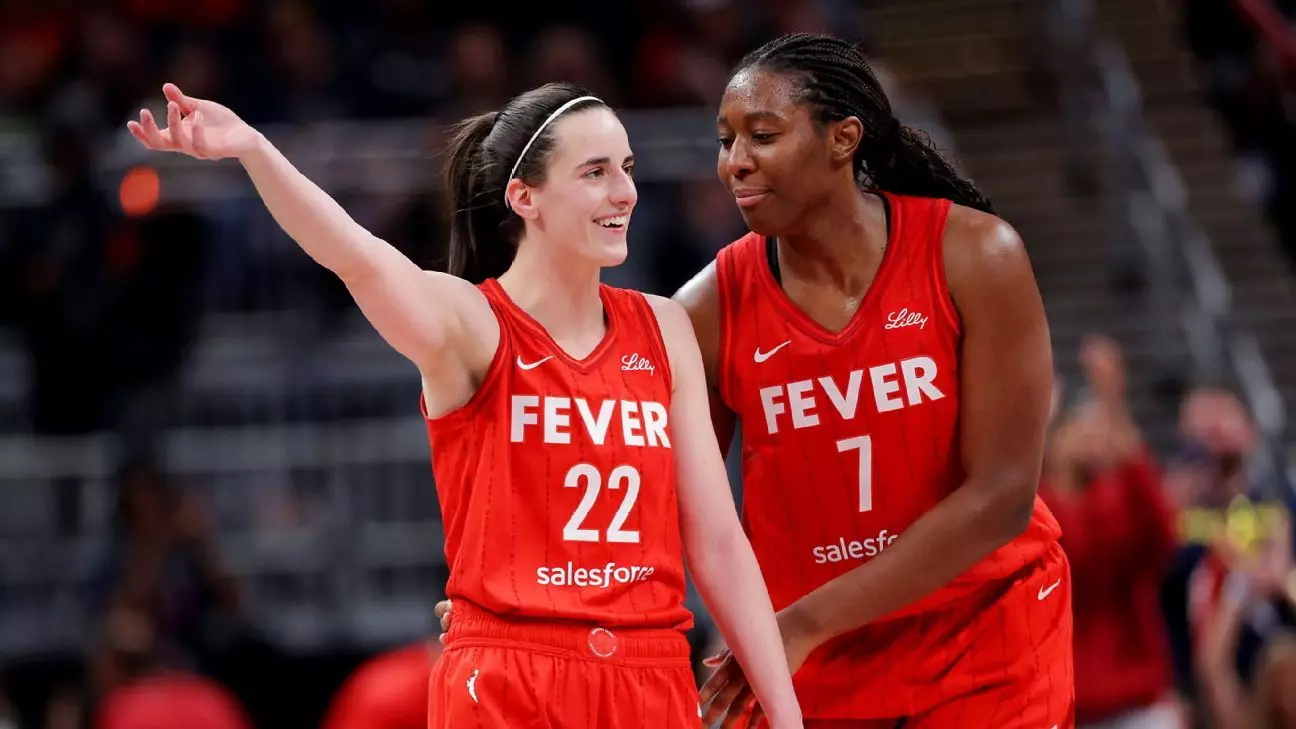The recent WNBA All-Star Game draft, orchestrated by captains Caitlin Clark and Napheesa Collier, was heralded as a celebration of talent and unity. However, beneath the surface, it reveals a complex web of rivalry, strategic negotiations, and unspoken tensions that challenge the narrative of seamless collaboration often associated with such events. The selection process, rather than highlighting pure meritocracy, exposes the underlying power struggles among teams and individuals vying for recognition and influence.
Clark’s inclusion of Fever stars Aliyah Boston and Kelsey Mitchell demonstrates her strategic approach to assembling a formidable squad. Yet, her choice to prioritize her teammates underscores a subjective element in team formation, potentially risking accusations of favoritism. Conversely, Collier’s selections, especially her pairing with Breanna Stewart—her former teammate—are as much about maintaining camaraderie as about maximizing on-court synergy. This apparent personal favoritism introduces questions about whether the draft serves solely as a showcase of talent or subtly reflects underlying alliances and loyalties.
Furthermore, the decision to swap coaches—reassigning Cheryl Reeve from Team Clark to Team Collier—illuminates another layer of strategic maneuvering. It was a calculated move, seemingly aimed at balancing coaching influence while also addressing associated team dynamics. Such behind-the-scenes negotiations reveal that at its core, the draft is as much about managing relationships and backstage politics as it is about on-court performance.
Factionalism at Play: The Politics of Player and Coach Alliances
The picks reveal more than just player rankings; they expose factional lines shaping the All-Star spectacle. Collier’s choice of Stewart, a former UConn teammate, illustrates the reinforcement of personal bonds, which might marginalize other deserving players. Similarly, Clark’s selection of Kelsey Mitchell, with whom she shares a club team, emphasizes the importance of familiar chemistry, often at the expense of broader team diversity.
The potential trades, notably Clark’s initial offer of Satou Sabally for Stewart, exemplify the strategic machinations that reveal competitiveness rather than pure camaraderie. Collier’s sharp counter-offer—asking for Boston in exchange for Stewart—exposed a deliberate bid to reconfigure team strengths while maintaining a delicate balance. This negotiation suggests that even during a celebratory event, players and captains practice a form of political diplomacy, fostering alliances that could influence future team compositions or even league dynamics.
Coaching allocations further illustrate this tendency toward factionalism and influence peddling. Reeve coaching Collier’s team—despite her original assignment—was a calculated move, arguably intended to unify team strategies and personal loyalties. Similarly, Sandy Brondello’s reassignment emphasizes the importance of navigating league politics and personal relationships behind the scenes, revealing a layer of manipulation that belies the ostensibly friendly nature of All-Star festivities.
What This Draft Tells Us About the State of Women’s Basketball
Beyond the spectacle, the draft exposes the intricate politics of women’s basketball, where collaboration often intertwines with competition. The event becomes a microcosm of the broader league environment—one marked by shifting alliances, power struggles, and strategic positioning. While the league champions inclusivity and excellence, the actual process hints at a more fragmented reality where individual players and coaches seek to elevate their standing, influence, and legacy.
This nuanced portrait challenges the simplistic idea that All-Star events serve purely as celebrations of talent. Instead, they reveal how personal ambitions, team loyalties, and league politics subtly shape the narrative. The engagement of players in drafting—an activity rooted in strategy and negotiation—mirrors the larger dynamics in women’s professional sports, where collaboration often masks underlying rivalries and transactional alliances.
In a landscape increasingly clamoring for equality and recognition, these behind-the-scenes machinations underscore the importance of organizational transparency and player agency. If women’s basketball aspires to rise to greater heights, acknowledgment of these internal power plays must be part of the conversation. The upcoming game, though ostensibly a showcase of talent, ultimately stands as a testament to a sport that, at its core, remains deeply intertwined with human ambition—and the inevitable conflicts it engenders.

